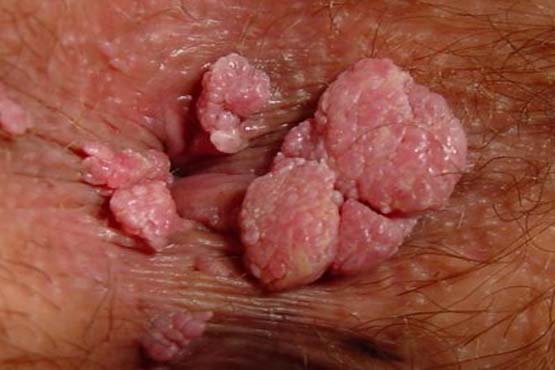
Anal Warts
HPV infection can also cause anal or rectal warts. In consequence of the transmission of the virus in the genital fluids to the cracks in the anus area may cause warts around and even inside the anus. Small anal cracks and irritations caused by anal intercourse pave the way for the transmission of the virus. Such lesions are most common in homosexual men. Despite all this, the appearance of warts on a person's anus does not necessarily mean that the person has had anal intercourse. The virus can also be transmitted through anal fissure and cracks caused by long-term constipation. A Danish study of approximately 50,000 men and women clearly showed the association between the genital warts and anal cancer in particular.
HPV infection can also cause anal or rectal warts. In consequence of the transmission of the virus in the genital fluids to the cracks in the anus area may cause warts around and even inside the anus. Small anal cracks and irritations caused by anal intercourse pave the way for the transmission of the virus. Such lesions are most common in homosexual men. Despite all this, the appearance of warts on a person's anus does not necessarily mean that the person has had anal intercourse. The virus can also be transmitted through anal fissure and cracks caused by long-term constipation. Warts may not show sign immediately after the virus infects the area through the anal cracks. When the warts show signs 1 to 6 months after the infection, white-gray, stemmed or cauliflower-shaped bumps develop usually in and around the anus. These warts may cause itching, bleeding, discharge and wetness around the anus.
Warts can be small in size, scattered around the area; or they can merge with each other, reaching quite large sizes. Since warts in the rectum can sometimes be confused with hemorrhoids, they can be neglected by the patient. When warts are found in the anal area, they should be treated and the type of HPV virus causing these warts should be identified, because we know that infections with high-risk oncogenic viruses increase the risk of anal cancer. A Danish study of approximately 50,000 men and women clearly showed the association between the genital warts and anal cancer in particular. If there is only a single anal wart or limited number of anal warts, it is possible to remove the wart(s) with laser by just numbing the application area. However, if there are pervasive anal warts in the form of clusters, treatments are preferred to be performed under general anesthesia. As with other genital warts, there is a risk of recurrence. If warts recur, the treatment is repeated the same way.
Measures intended to prevent recurrence of genital warts apply here as well. These measures include keeping the body immunity strong, not plucking the warts, not making the warts bleed, not shaving the anal area with a razor blade, not removing the hair from the anal area with wax, and not smoking.
In our HPV Treatment Center located in Silivri, we perform HPV treatment and genital wart cauterization procedures with laser, for the treatment of anal warts.
You can call our call center at 0850 490 1 478, to get detailed information about genital wart cauterization with laser and to make an appointment.

You might also be interested in this article
Wart Treatment
Vaporization of wart tissue with fractional carbon dioxide laser is an extremely effective, successful, and low recurrence rate treatment option. The vaporizing effect of laser beams on HPV-affected tissue is utilized. Local anesthesia may be required before the procedure.
Read More
Search Terms
- how to detect rectal wart
- Which doctor should I go to for rectal warts?
- rectal wart herbal treatment
- anal wart cream
- Does breech wart cause cancer?
- watch breech wart surgery
- Which doctor should I go to for genital warts?
Have a questions?
Our Working Hours
- Monday
09:00 - 18:00
- Tuesday
09:00 - 18:00
- Wednesday
09:00 - 18:00
- Thursday
09:00 - 18:00
- Friday
09:00 - 18:00
- Saturday
09:00 - 18:00
- Sunday
Closed
 Shqip
Shqip العربية
العربية Български
Български Français
Français Deutsch
Deutsch Italiano
Italiano Русский
Русский Español
Español Türkçe
Türkçe
